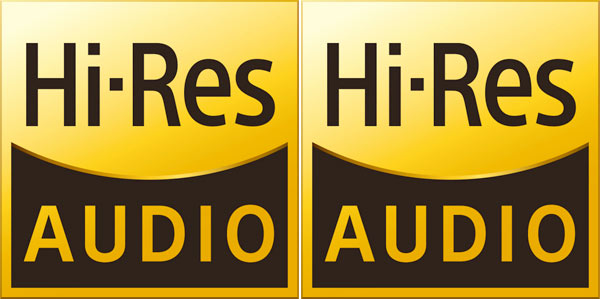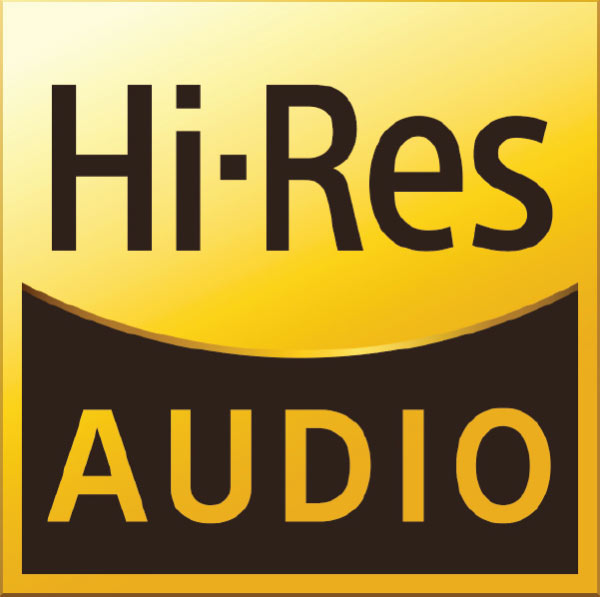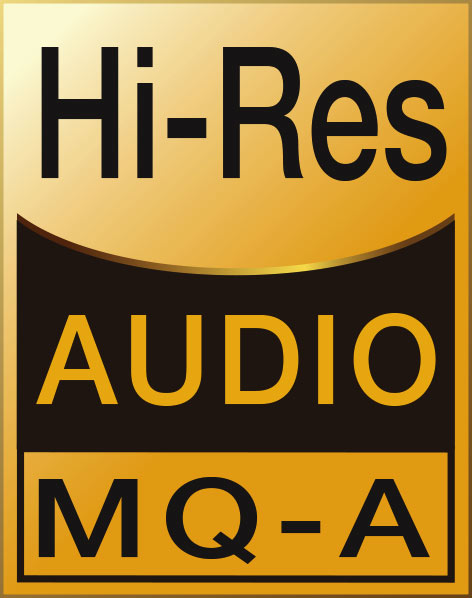Sony “HiRes Audio” Logo May Identify HRA
About 4 years ago, Sony’s legal team sought protection from the U.S. Patent and Trademark office for their “HiRes Audio” logo. They couldn’t claim ownership of the terms but they did seek protection for the layout of the logo that they’re using on their new hardware, on their website and throughout their marketing materials. They were granted registration of the trademark AND have recently made their intellectual property available to the rest of the high-resolution community. I learned about this new development during the CEA Audio board meeting last week in New York City. So is this a good thing or not? Will other manufacturers adopt and incorporate the new logo into their own campaigns? I don’t think so. Here’s why…
Take a look at the logo displayed below. What do you think? While the design reflects professional design standards, it doesn’t do anything to convey anything about the subject area that it purports to cover. We need more information not just a fancy logo…especially if the “Master Quality” source descriptors contained in the HRA definition document are to be considered. I brought this up at the board meeting. Is there going to be some sort of additional graphic information associated with the new definition?
Figure 1 – The “Hi-Res Audio” logo as trademarked by Sony in 2013. This logo is being used on their hardware and website.
I wrote many months ago about the issue of naming this new initiative and I believed (and still believe that HD-Audio) would be a much better choice for the new standard of music listening. It’s been adopted by HDtracks, it was used as the label on the HD-Audio files on the Sprint HTC phone that I evaluated and it’s the name of this site! Maybe I should push ahead with my own naming preference. The high-resolution audio definition and logo aren’t going to make any impact on the future of this marketplace.
I’ve also considered another tack altogether. If the DEG, CEA, NARAS and the major labels are all happy with the definition that HRA is “lossless audio at better than CD quality” and then insist that every imaginable source when transferred to high-resolution PCM at 48 kHz/24-bits or better is suddenly “hi-res audio” then perhaps it’s time to strike out on my own. They’ve decided that everything that had previously been standard-resolution should now be called high-resolution so I guess I (and others making new real high-resolution audio productions) might have to grab Ultra High-Resolution Audio as the next step up.
The present Sony design is way too generic. What we need is a logo that includes the “descriptors”…the MQ-A or MQ-P combinations. Here’s an adjustment to the existing logo that I would suggest does a better job.
Figure 2 – The Sony Hi-Res Logo with the descriptor for “Master Quality – Analog Source” added.
I believe the logo has to impart some additional information besides just the vanilla statement that “we are high-resolution audio”. I was in favor of the descriptors as an indicator of what the “provenance” of a file could be…but have a problem with then calling every source high-resolution if it’s delivered in a high-res bucket.
I’d love to know what you think.




Yes, leverage the public’s understanding that HD-something means “better than what they used to have”.
Us consumers want to know both that the bucket is Hi Res and what the provenance of the source was. The Sony schema is too vague. Even the definition “lossless audio at better than CD quality” covers too much and therefore becomes quite meaningless. I like “ultra high resolution audio” term, It sounds like the term “ultra Hi Def Video” – 4K. Would there be confusion over this similarity for some folk? Just as the video world has gone from SD, to BD to ultra Hi Def, I think the audio world may be headed the same way, albeit a bit more slowly.
Of course the labels will want to reveal as little as possible regarding the resolution of each stage. Why wasting time. While using their logo when appropriate, you should protect & go with “Ultra High-Resolution Audio” accompanied with full provenance.
DR. AIX. You are correct to say that Sony design is way too generic. I believe HRA is the way to go. It makes alot of sense as far as high-resolution audio is concerned.
Hi Mark,
While I agree totally with your take on this (I am a graphic designer/illustrator), including your addition to the logo, I think there is a lot more going on here.
I’ve been following your (sometimes) despairing reportage of how the ‘industry’ is way too easily accepting a dumbed -down definition of hi-rez and I find myself constantly shaking my head at how it appears a golden opportunity is slipping away from us all – you are fighting a valiant fight and it’s much appreciated.
Having said that I feel that the ‘big boys’ have already got it sown up and worked out – it’s about money, future revenue, spin, look and feel but no substance, pretty typical corporate approaches really. Something that popped up the other day was the lead-in article, ‘As We See It’, in July Stereophile mag, by Steve Guttenberg – ‘Start making Sense’. http://www.stereophile.com/content/start-making-sense
Steve points out where he sees it going and from my perspective I think he has, unfortunately nailed it in one (apart from his blather about LPs…). He gives a link (http://www.stereophile.com/content/start-making-sense) to an address by Marc Geiger of WME, a talent/media agency set-up, at this year’s Midems Music expo – Marc is spruiking a general sweep away of things old, no physical media, no files even – just STREAMING and the big boys are salivating beyond their wildest dreams.
True high quality sound is of no interest to these people, just the ‘appearance’ of it to further boost sales. The small number (relatively) of audiophiles or others who value fidelity and dynamics etc as well as the sheer joy of the music itself will not be catered for, the general public will be/is being having the wool pulled over their eyes with the industry’s ‘re-definition’ of Hi-Rez. This is what you/we are seeing in action, a concerted effort to keep things as they always have been but presented in a shiny new suit of clothes.
Thanks for your work.
Ian
I’m with you Doc! As a consumer that spends a lot of money on a lot of technology, I DESERVE to know what I’m getting for my money. I don’t think I should be tricked into spending extra money for something it’s not. It blows me away that some of my decades old CDs blow away a vast number of new recordings. I don’t miss the worries of wow & flutter, azimuth, rumble, etc.
Keep fighting the good fight!
Oh, I should have popped in a nice comment from one of the reply letters on the Stereophile site:
HEY, STOP PISSING IN OUR CUPS AND TELLING US IT’S CHAMPAGNE.
I rather like that…
You are 1000% correct that HD-Audio is a far better moniker than Hi-Res Audio because it corresponds well with HDTV, which is something everybody already understands and has experienced, so HD-Audio creates a much clearer and complementary association with an already-extant hi-rez technology.